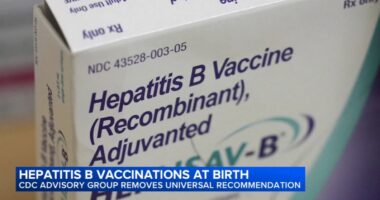Share this @internewscast.com

You know microplastics are showing up in your take out containers and your junk food.
However, concerning new research shows that they are present in almost everything you ingest — and the impact of these tiny particles is far from insignificant.
A new study in mice suggests that microplastics found in food and drink could be interfering with blood sugar levels and damaging the liver.
Scientists at the University of California, Davis, discovered that animals that ingested polystyrene nanoplastics — commonly found in food packaging — developed glucose intolerance and exhibited signs of liver damage, two significant health problems with potential long-term consequences.
The results — shared at the American Society for Nutrition’s annual meeting on Sunday — highlight concerns about how these unseen plastics might be affecting human health.
“With the growing concern around micro- and nanoplastic exposure, we wanted to evaluate the impact of this exposure on health,” lead author Amy Parkhurst, a doctoral candidate at UC Davis, said in a press release.
Parkhurst and her team fed mice a standard diet spiked with a daily dose of polystyrene nanoparticles, mimicking the way people are exposed through food and drinks.
The dose was chosen to reflect real-world human exposures — which could range from tens of thousands to millions of particles per year, according to previous estimates.
Compared to their plastic-free peers, the mice that ate nanoplastics had trouble regulating blood sugar — a condition known as glucose intolerance, which can be a warning sign for diabetes.
The plastic-dosed mice also had higher levels of a liver enzyme called ALT — a common marker for liver injury.
On top of that, the study found that the plastics made the gut more “leaky,” allowing harmful substances to enter the bloodstream and potentially stress the liver even more.
While the findings come from mice, not humans, they add to a growing pile of research raising questions about how microplastics — which are now found everywhere from bottled water to seafood — might be affecting our health.
“We can’t control for all the plastics the mice are exposed to,” Parkhurst noted, “However, our study design allowed us to see dose-correlated changes since the nanoplastics-dosed group would have a higher exposure.”
Parkhurst emphasized that more research is needed to understand how these particles affect people and whether they pose similar risks in the long term.
Still, the message is clear: what’s too small to see might not be too small to hurt.
















